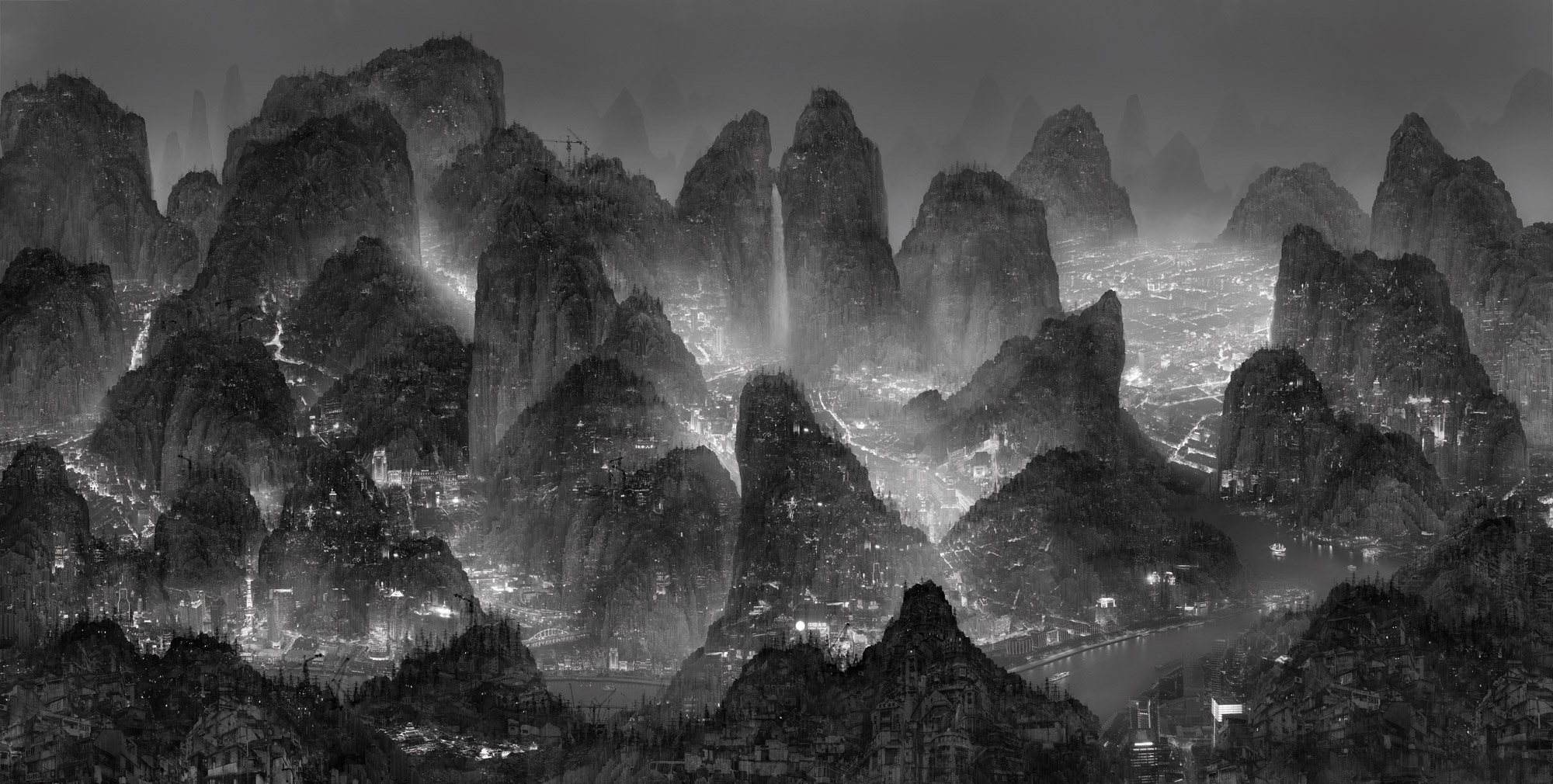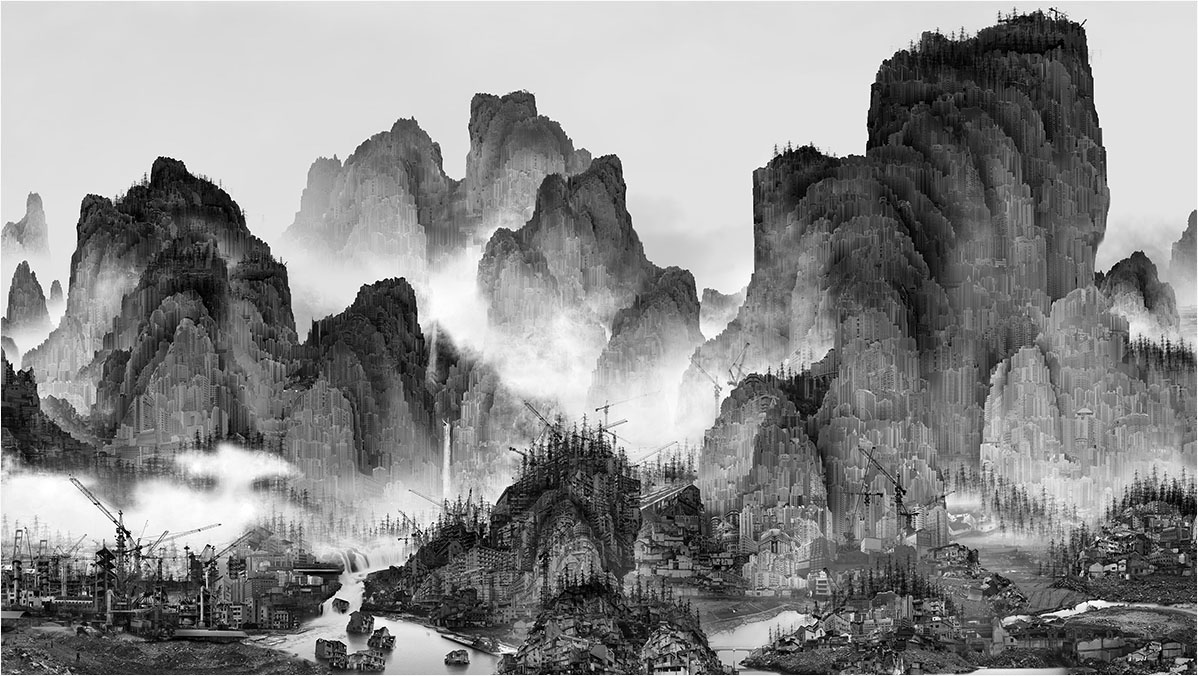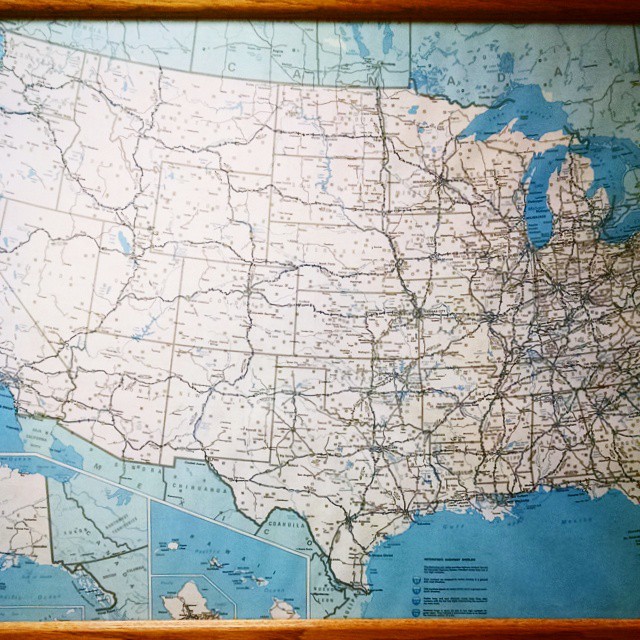Yang Yongliang is a Chinese artist who has drawn incredibly detailed, fictional landscapes of futuristic cities intertwined with massive natural structures. I recently came across his work and was simply left speechless.


The same city depicted in the first picture above is also shown in what appears to be a much larger piece. The minutiae is simply breathtaking - it’s hard to fathom the amount of work that must have gone into producing just a single piece.
The closest thing it reminds me of is the art of Stephen Wiltshire or that of Masamune Shirow in Ghost in the Shell.
For years, my Friday morning routine was set in stone: I sat down in front of my work computer, opened up the website of the Daily Show and started catching up with the episodes of the past week. It was nice and easy: a solid two hours of good programming on the day before the week-end rolls in… And all of sudden, the drive to do this went away.
When Jon Stewart took time off last year and Oliver assumed temporary control, it was a stern realization of how much Stewart had designed a show that couldn’t be run by anyone else – or at least, not by someone the caliber of John Oliver. The following months were disapointing as it seemed Oliver was just going to step down and resume working as a simple cast member. Then Last Week Tonight happened and the rest is history: with under a third of Comedy Central’s reach, Oliver racks in ratings that are in the same ballpark as Colbert.
In Vulture today, Matt Zoller Seitz takes a stab at explaining what happened and completely nails it:
But that forward-motion thing: It really matters. When you watch Oliver’s show, you’re riding a bike through terrain that keeps changing. Its Comedy Central progenitors are more like stationary bikes: There is the feeling of motion, sometimes furious motion, and perhaps there are tangible benefits (We’re keeping our minds lean? I’ll see myself out, thanks), but are you really getting anywhere? Every Daily Show is, in a sense, the same show; the gags change and sometimes there’s a splendidly silly image, but the feeling of a well-oiled machine is unavoidable. At the end, you feel that certain core beliefs have been repeated and thus strengthened, and that’s about it
Two days ago, I was on a plane flying from New Orleans to San Francisco. The nine days before that consisted of that same trip, in reverse, in a car. We only had a couple of planned stops – the first night in Vegas and the last two in New Orleans. Between those two points lied a relative freedom, a balance between where the road can take us and where we wanted to go. It was a prototypical american experience; the motorized and air conditioned version of the old school walkabout.
In Michael Moore’s 1997 movie, there’s a scene where he is getting interviewed on the radio. Following a question from the host, they brainstorm what would be a better name for the United States of America. In a laugh, they end up agreeing on “The Big One”. After this trip, it’s essentially impossible to disagree with Moore’s judgment: this is one big country.

Long roads, endless plains, massive dams, gigantic holes in the ground, mile-long trains, big craters. And it’s also remarkably empty. Besides narrow corridors of civilization lie prairies and mountains as far as the eye can see. We saw the Hoover dam, we got snowed on at the rim of the Grand Canyon, we saw Meteor Crater and then came the New Mexico desert and the desolation of West Texas.
I took a bunch of pictures which I will be working on soon and I also have a couple other write-ups that I want to publish soon.


